In case you don’t know where you are, at a certain spot in central Berlin, a large sign will tell you.
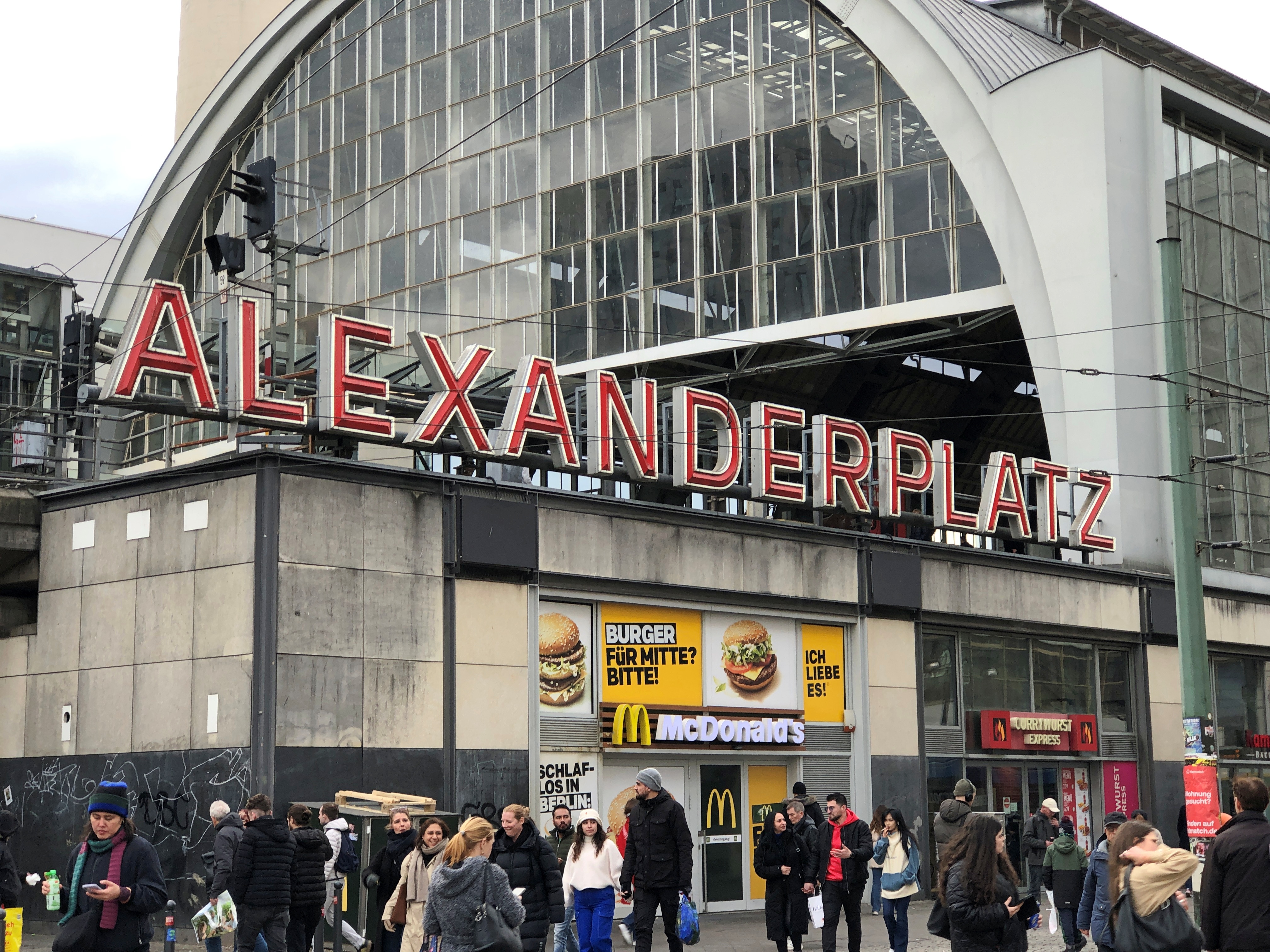
Bet it’s a nice glow at night, too. The sign is just outside the Alexanderplatz Bahnhof, where intercity trains and the U-bahn and the S-bahn and trams and buses converge. The station was an important one for us, since we often transferred there to the U-bahn line to the equally interesting Rosenthaler Platz, location of our accommodations (and which for some reason is two words). Going to or from our hotel generally involved passing through Alexanderplatz.
The platz has a long history as a meeting place, and along the way (1805, to be exact) picked up its current name, in honor of Tsar Alexander I, who visited Prussia that year. But if you had to pick a time to visit, probably 100 years ago would be it. One of the reasons they say Berlin in the ’20s was Berlin in the ’20s was the activity around Alexanderplatz.
In 1969, the East German authorities built the World Clock (Weltzeituhr) at Alexanderplatz, whose function is to tell the time of 148 large cities around the world, and display a spiffy model of the Solar System (and I count nine planets; glad no busybody has removed Pluto).
Built to remind passersby (at one time) that socialism was the future? Was worldwide? That the Solar System is red? Pining down motive among communist officialdom over 50 years ago is a fool’s errand, I’m afraid. 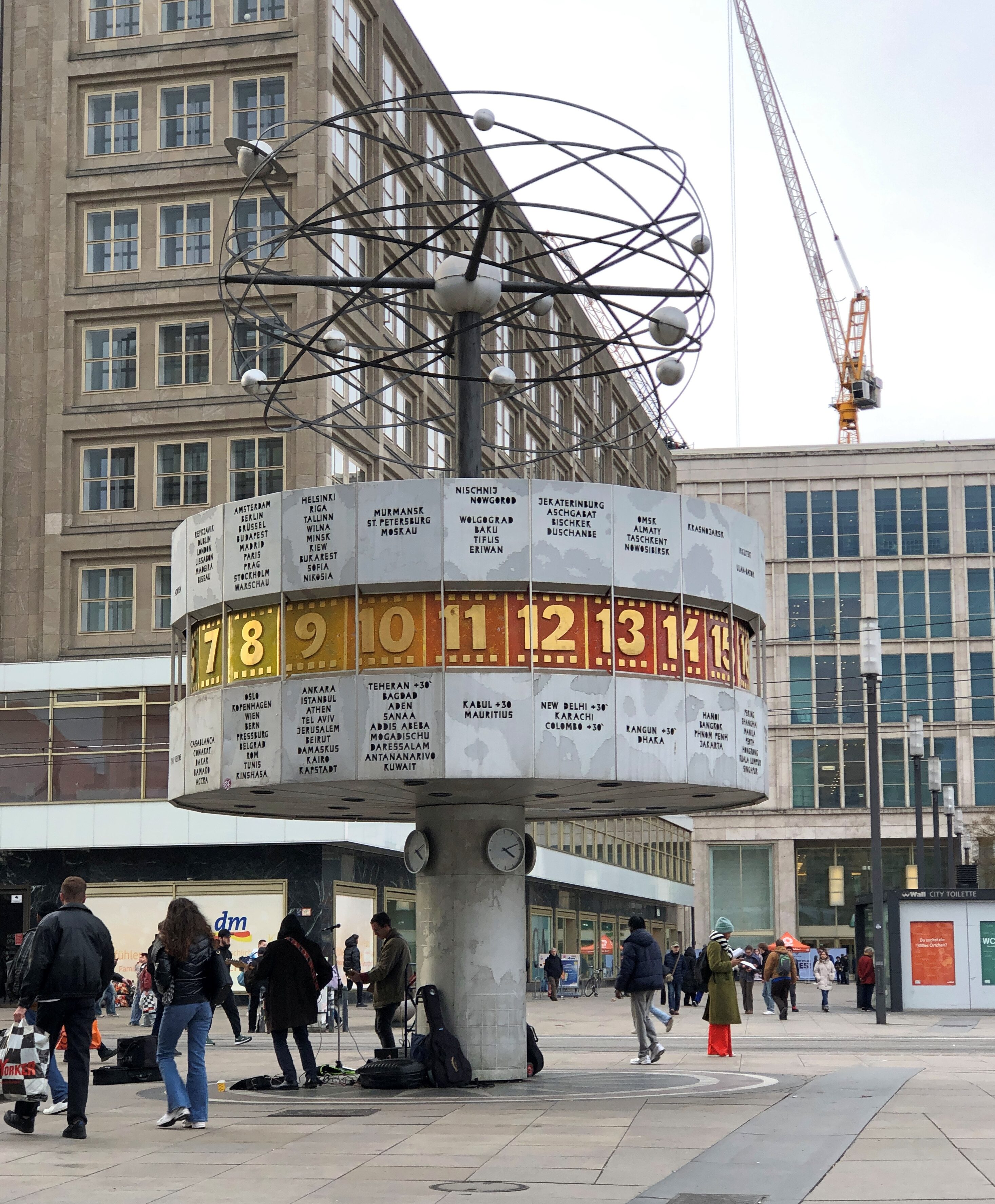
As seen at about 4:10 pm on March 13. We sat on a bench nearby, taking the rest we needed as older men. But I should have taken a closer look at the clock, since it seems that the drum tells us that the time in Berlin – along with Amsterdam, Brussels, Budapest, Madrid, Paris, Prague and a lot of other places – is just past 8 am. So the mechanism had stopped? Did I misunderstand it? Something else? 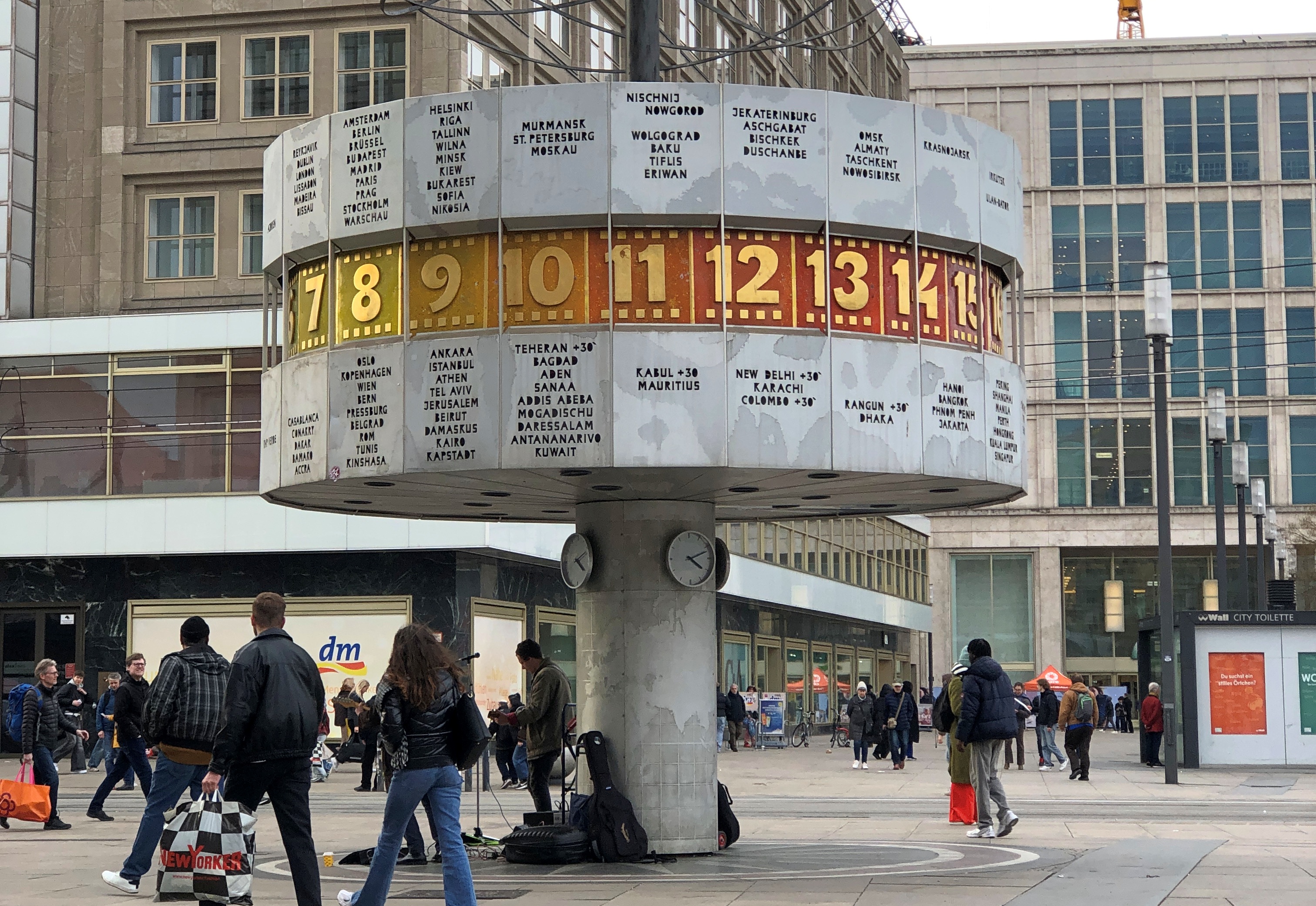
Such are the little retroactive mysteries of travel. In any case, life was going on at the platz, all around the clock: shoppers, commuters, buskers and more. At various points in history, Alexanderplatz has been the scene of mass political demonstrations (e.g. 1848, 1919, 1989), but even on ordinary days, people are out trying to make a point. Such as this fellow.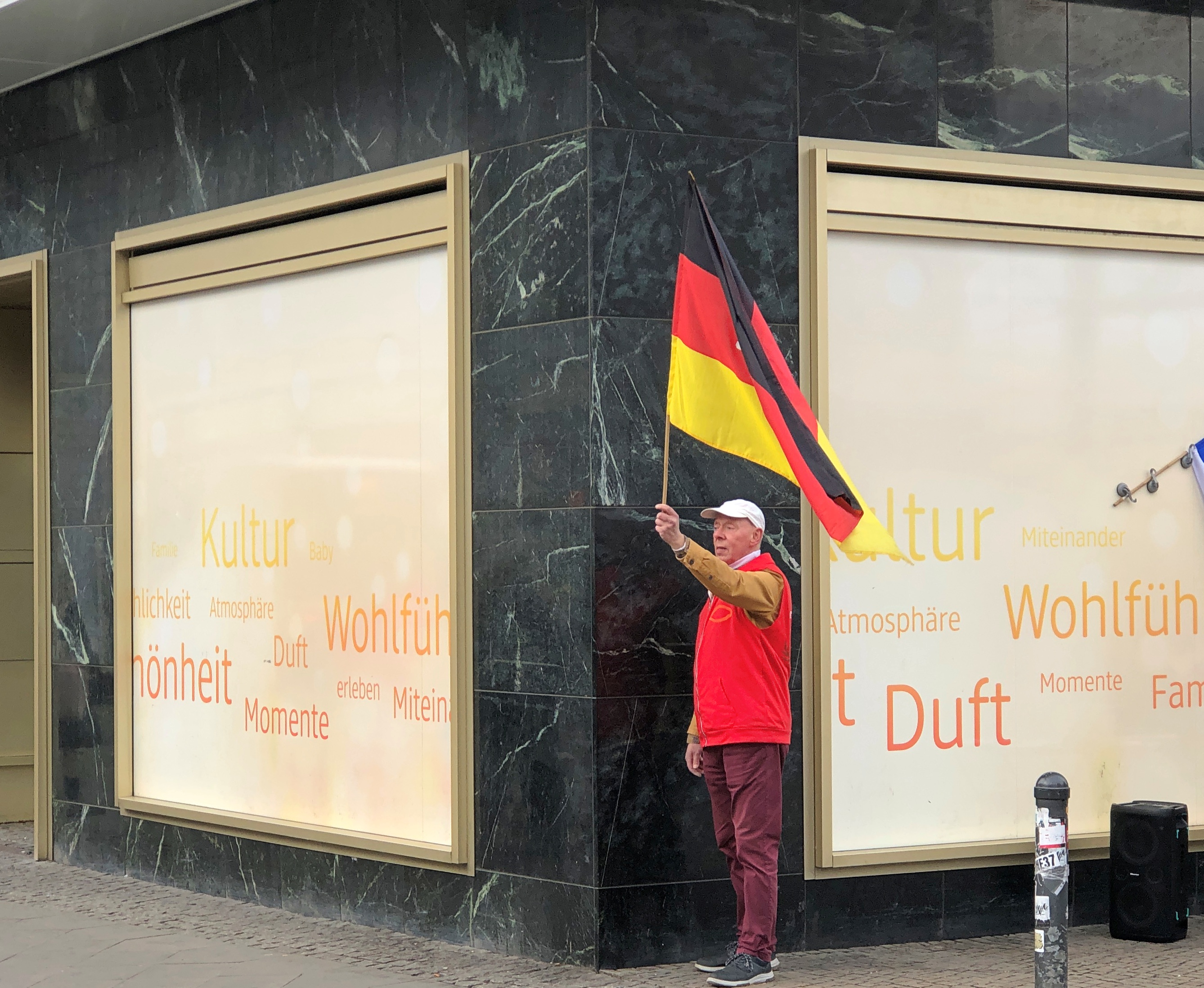
I haven’t spent a lot of time in Germany, but my impression is that waving, or even displaying, the national flag isn’t quite as common as here in the U.S. Turned out, however, that his flag was a bit modified to convey a message that one hopes isn’t nationalist.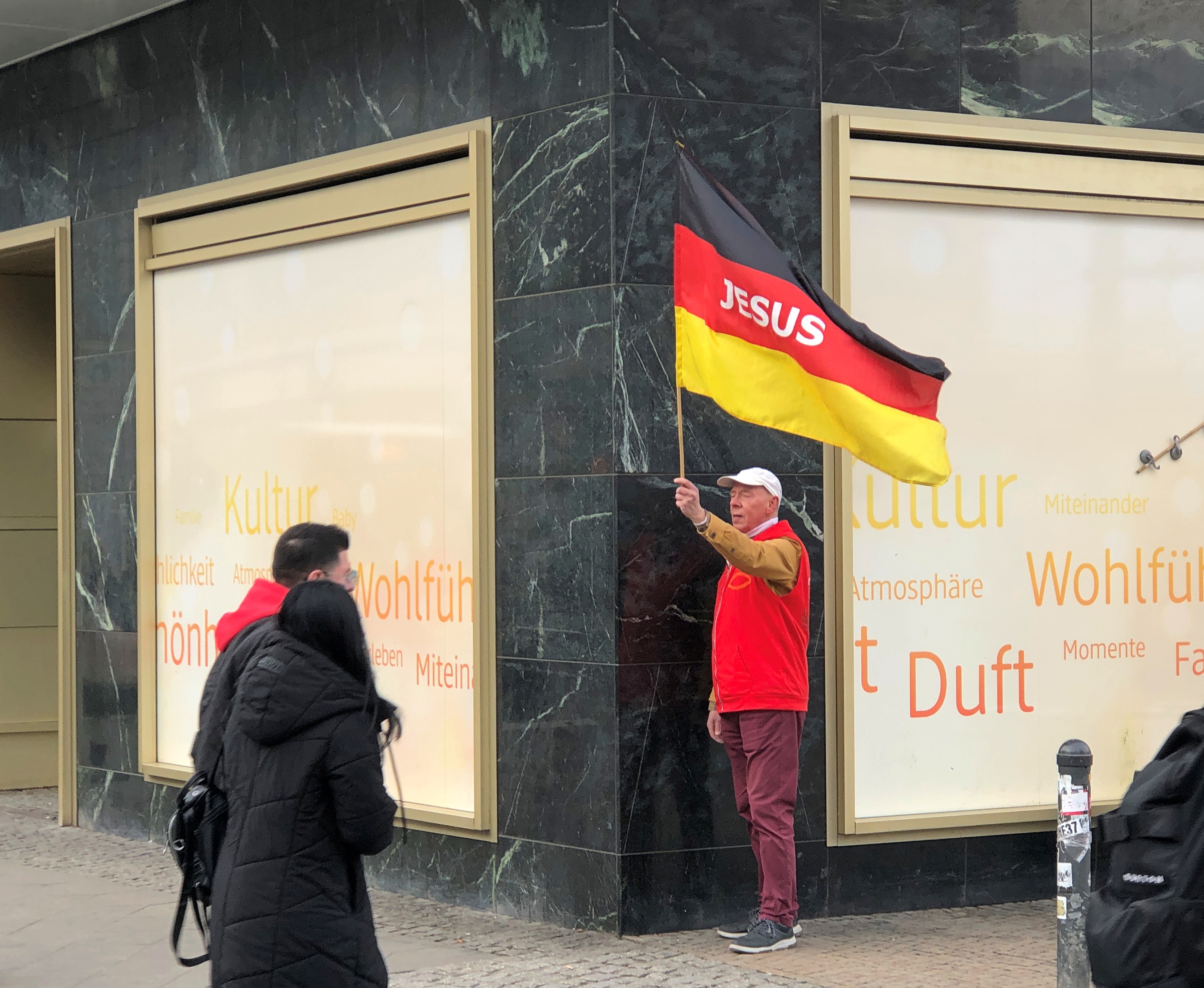
The platz reminded me that I ought to read Berlin Alexanderplatz. I remember some years ago watching the first episode of the ’80s West German TV adaptation, but not liking it, except now I can’t remember why. Maybe Fassbinder isn’t for me, though I haven’t seen any of his other movies either. Still, I suppose if you want to know more about Berlin in the ’20s – and not the 2020s – the book would be a worthwhile read.